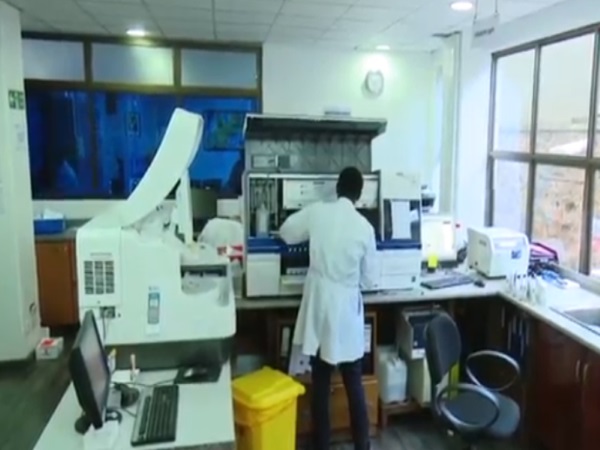Amolatar district has registered a 44% decrease in health workers absenteeism from 50% in 2015 to 6% presently. The reduction is attributed to the human resources information tool introduced in the district by the government in 2015 to curb absenteeism of workers in health facilities. The project implemented by Intra Health with support from USAID has made a tremendous transition from a paper only filing system to an Electronic Human Resources Information System capable of providing information about specific health workforce questions in the district. Alex Gwom the Assistant Records Officer in the district said he was able to prepare analytical data for the 141 staff working in 11 facilities. “They pick the information from the duty roster, arrival book and then a request file that means out of the station. Then they make a conclusive data. So at the end of the month, it would be submitted with 105 HMIS to the BioStat. So from there, we pick our report on attendance then we capture it to the HI system." Said, Alex Gwom – IntraHealth Focal Person, Amolatar.
Gwom also said that this system is accessible via the internet and it helps to provide timely reports to the District Health Officer. “So now, am after data quality, timeliness, completeness, accuracy and then the transparency.” In 2015, a study by IntraHealth revealed that 50% of health workers in Uganda's public sector were not showing up or came to work but left early to collect dual pay at another facility. The Assistant District Health Officer Dr. Alex Ogwal said the system has been vital in many ways including the identifying the absent workers, knowing why they did not show up for duty and also planning for staff. “Right from the appraisal form that is performance planning, now there is no because we have taken the in-charges through the performance planning. The toll has also helped us in tracking those who are due to exit service. The system reminds you because you can just print say, how many people are due to exit service in the next five years then the system will generate for you.” Said, Dr. Alex Ogwal – Assistant District Health Officer, Amolatar.
Nakatiti Health Center II is one of the facilities embracing the use of this monitoring tool. The In-charge here Thereza Peduni works with six colleagues. She was happy about the toll because it has helped to instill discipline at the facility. “It has always been sometimes challenging when arranging in a way that when trying to be hard on the staffs they are also sometimes like hating us but no matter we sit down and then we explain to them why it is important to do it that way. And they have also understood it.” Said, Thereza Peduni – In-Charge, Nakatiti H/C II. Assistant DHO Dr. Ogwal said also the system requires to have additional staff and more equipment for efficiency. “Because like now, we have the computer but we have been crying we wanted workforce around so that we cover some area may be we house this place as a central place for managing human resources in the district.”
The Chief Administrative Officer who supervises services in the district said he intends to pilot the monitoring tool to other sectors due to its efficiency. “There is rampant absenteeism and we pay a lot of no work done at the end of the month. You find a staff only appearing five or ten times a month but is paid even for the rest of the days he has not worked for. But now that they have reduced the system to capture thumb prints that the machine will detect your absenteeism and you would be paid according to the days attended to, that thing has generally made us pay for work done.” Said, Pius Epaju – CAO, Amolatar District.
As an organization, Vincent Oketcho the Chief of Party at IntraHealth said the organization is helping to enhance the implementation of government plans and therefore should be ready to take over the program once I wind up next year. “When it links up with other systems it becomes more robust and therefore more likely to be supported and sustained”. Oketcho reckoned that their period of operation in 122 districts in the country will leave a remarkable difference in service provision in the health sector. “We were able to display clearly how short we were in terms of health workers and made a case for increased investment in the recruitment of health workers and the government was able to fund additional 49 billion shillings which we used to recruit 7,211 health workers across the country in all districts. And this grossly improved the staffing levels especially at Health Center III and IV.” Said, Vincent Oketcho – Country Director, IntraHealth Uganda.

